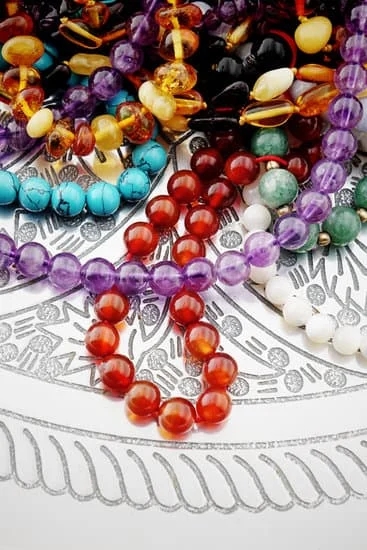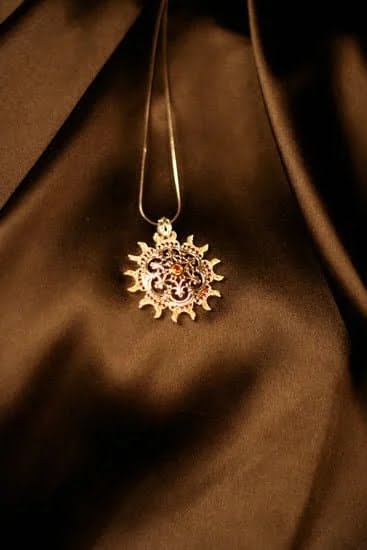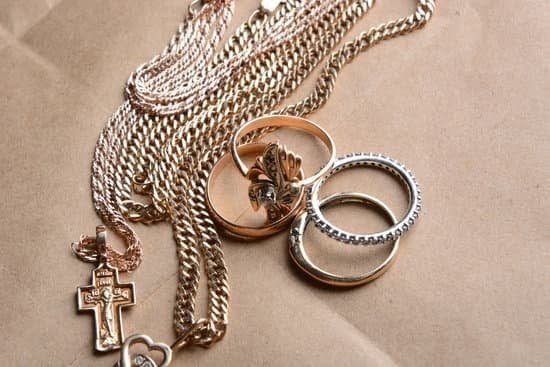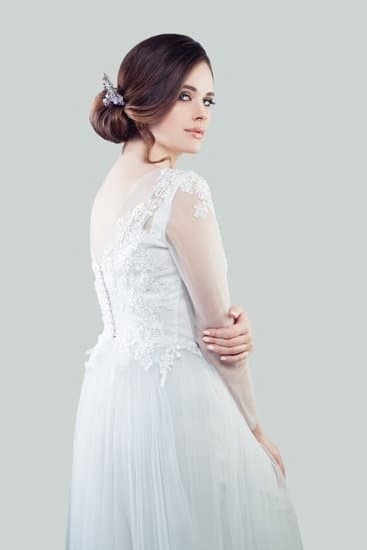Diamond jewelry has long been a symbol of elegance, beauty, and luxury. The sparkling diamonds and intricate designs of these pieces have captivated people for centuries.
Learning to draw diamond jewelry not only allows you to appreciate their allure on a whole new level but also gives you the satisfaction and sense of accomplishment that comes with creating something beautiful with your own hands. In this blog post, we will guide you through the process of drawing diamond jewelry, step by step.
Drawing diamond jewelry is not only a creative outlet but also a way to develop your skills as an artist. Whether you are an aspiring illustrator or simply looking for a new hobby, learning to draw diamond jewelry can be an exciting and fulfilling journey. By mastering the techniques needed to create these intricate pieces, you will enhance your understanding of shapes, proportions, textures, and colors.
The purpose of this blog post is to teach readers how to draw diamond jewelry in a comprehensive and approachable manner. Throughout the article, we will provide you with the necessary tools, step-by-step instructions, and helpful tips to create stunning drawings that showcase the beauty and intricacy of diamond jewelry. So grab your pencils, erasers, and paper – let’s begin our artistic exploration into the world of drawing diamond jewelry.
Tools and Materials Needed
To successfully draw diamond jewelry, it is important to have the right tools and materials at your disposal. Here is a list of essential items you will need to create stunning diamond jewelry drawings:
- Pencils: Invest in high-quality graphite pencils with varying degrees of hardness, such as HB, 2B, 4B, and 6B. These pencils allow for better control and shading in your drawings.
- Erasers: A kneaded eraser is gentle on the paper and can be shaped to precisely erase small details. A vinyl eraser can be used for larger areas or hard-to-reach places.
- Paper: Choose a smooth and heavyweight paper that can withstand constant erasing and shading. Acid-free drawing paper or Bristol board are excellent options.
Optional tools include rulers or compasses for precise measurements, particularly when drawing jewelry pieces with symmetrical designs.
Once you have gathered the necessary tools, follow these steps to start creating your diamond jewelry drawings:
- Begin by lightly sketching the basic shapes of the jewelry piece using a light pencil stroke.
- Refine the shapes by adding more detail and correcting any imperfections using darker pencil strokes.
- Use shading techniques to create volume and depth in your drawings. Start with light shading then gradually build up darker tones where necessary.
- Pay attention to highlights and reflections on gemstones and metal surfaces to add realism to your drawings.
- Experiment with different textures like brushed metal or faceted diamonds by adjusting your pencil strokes accordingly.
Remember that practice is key in improving your drawing skills. Take advantage of online tutorials and resources that offer advanced techniques for more intricate diamond jewelry drawings.
By learning how to draw diamond jewelry, you can unleash your creativity while gaining a deeper appreciation for these exquisite pieces of artistry. So gather your tools, let your imagination soar, and embark on an artistic journey exploring the captivating world of diamond jewelry drawing.
Basic Shapes and Proportions
Drawing diamond jewelry requires an understanding of basic shapes and proportions. These elements form the foundation for creating realistic and visually appealing designs. By mastering these fundamental concepts, artists can accurately represent the intricate geometry and symmetry found in diamond jewelry.
When it comes to diamond jewelry, certain shapes are commonly used, such as ovals, squares, triangles, and circles. Understanding how to draw these shapes accurately is essential for achieving a realistic representation. To draw a diamond shape, start by drawing two straight lines that intersect at a 90-degree angle.
Then, connect the ends of these lines with two additional lines at a similar angle but slightly longer in length. Finally, add small line segments to create the facets or edges of the diamond shape. This will serve as a guideline for creating symmetrical and proportionate diamond jewelry designs.
Different pieces of diamond jewelry incorporate various shapes in their design. For example, stud earrings often feature simple circular shapes or small square panels with defined edges. Pendants and necklaces may incorporate oval-shaped gemstones or rectangular settings to hold multiple diamonds.
Bracelets might include chains made up of repeating geometric patterns like circles or triangles. By understanding how different shapes are integrated into various types of jewelry, artists can create accurate representations that capture the essence and details of each piece.
To further enhance the realism of diamond jewelry drawings, attention should be given to adding details and texture. Techniques like cross-hatching or stippling can be utilized to depict intricate designs on metal components such as bracelets or pendant chains.
Drawing facets on diamonds requires careful observation of how light reflects within each facet’s surface and incorporating shading accordingly. Artists can also add sparkle or shine by using techniques like blending graphite pencils softly to create smooth gradients or adding highlights with white pencil marks.
Overall, mastering basic shapes and proportions is crucial for drawing diamond jewelry accurately. By incorporating different shapes into various pieces of jewelry designs and paying attention to details and textures associated with them, artists can elevate their drawings to a higher level of realism. Now that you have learned these fundamental concepts, let’s move on to the next step: step-by-step drawing instructions.
| Shapes | Examples in Jewelry Designs |
|---|---|
| Oval | Pendants and necklaces with oval-shaped gemstones |
| Square | Earrings with small square panels or settings for multiple diamonds |
| Triangle | Bracelets with chain patterns consisting of repeating triangles |
| Circle | Stud earrings featuring circular shapes or components |
Step-by-Step Drawing Instructions
Drawing diamond jewelry can seem daunting, but with the right guidance and practice, anyone can create stunning pieces of art. In this section, we will break down the process into manageable steps to help you bring your diamond jewelry drawings to life.
- Start with simple designs: Begin by drawing basic pieces like stud earrings or a solitaire ring. These designs have fewer elements and provide a great foundation for understanding the overall structure and proportions of diamond jewelry. Pay attention to details such as stone placement and band thickness.
- Progress to more complex pieces: Once you feel comfortable with the basics, you can gradually move on to more intricate designs like necklaces or bracelets. These pieces often require drawing multiple elements, such as chains or multiple gemstones, which will challenge and enhance your skills further.
- Provide clear visuals: It is essential to have visual references for each step of your drawing. Use a combination of pictures of real diamond jewelry and reference sketches to guide your hand and keep your drawing accurate. You can also find step-by-step tutorials online that offer detailed illustrations for each stage.
Here is an example step-by-step process for drawing a diamond necklace:
- Start by lightly sketching the outline of the necklace chain.
- Add details such as clasps or hooks depending on the design.
- Draw the pendant shape at the desired position on the chain.
- Incorporate gemstones by outlining their shapes within the pendant.
- Use shading techniques to create depth and highlight reflections on the diamonds.
- Don’t forget to pay attention to shadows cast by different elements.
By following these step-by-step instructions, you’ll gain confidence in drawing various types of diamond jewelry.
4: Exercise patience: Drawing intricate details may require time and precision; therefore, it’s important not to rush through any step. Take breaks if needed and come back with fresh eyes to reevaluate and refine your drawings. The more you practice, the better your understanding of diamond jewelry drawing techniques will become.
Remember, every artist has their unique style and interpretation, so don’t be afraid to experiment and discover your own creative voice. Practice regularly, study different designs for inspiration, and seek out resources for additional guidance. With dedication and perseverance, you’ll soon be able to create breathtaking drawings of diamond jewelry that truly capture their beauty.
Adding Details and Texture
To create realistic and appealing drawings of diamond jewelry, it is essential to pay attention to adding details and texture. These factors can bring life to your artwork and make the jewelry piece visually captivating. Here are some techniques and tips for adding details and texture to your drawings:
- Texturing Techniques: One way to add texture to your drawings is by creating different patterns or finishes commonly seen in diamond jewelry. For example, you can use cross-hatching or stippling techniques to depict the appearance of engraved designs on a necklace pendant or bracelet.
- Drawing Facets: Diamonds are known for their brilliance and sparkle, which is achieved through facets. To draw facets in a diamond accurately, start by sketching the outline of the stone’s shape. Then, divide the gem into several parts using straight lines that radiate from its center. Finally, darken the areas between these lines while leaving small white spaces to represent light reflecting off each facet.
- Shading and Highlights: Using shading techniques can enhance the depth and realism of your drawings. To show subtle shading on a piece of diamond jewelry, identify where the light source is coming from and shade accordingly with darker tones on the opposite side of where light hits the object.
- Sparkle and Shine: Creating a sense of sparkle in your drawing can make it more mesmerizing. You can achieve this effect by adding highlights strategically on certain areas of the jewelry piece using a white pencil or eraser. Remember that diamonds reflect light differently based on their cut quality, so study reference images or actual pieces to understand how they catch the light.
Remember, practice is key when it comes to mastering these techniques for adding details and texture in your drawings of diamond jewelry. Don’t be afraid to experiment with different approaches and learn from other artists’ work as well. With time and dedication, you will develop your own unique style and create stunning drawings that capture the beauty of diamond jewelry.
| Technique | Description |
|---|---|
| Texturing Techniques | Create different patterns or finishes commonly seen in diamond jewelry using cross-hatching or stippling techniques. |
| Drawing Facets | Represent the brilliance of a diamond by sketching its shape, dividing it into parts with straight lines, and darkening the areas between these lines. |
| Shading and Highlights | Add depth and realism to your drawings by shading according to the light source and incorporating highlights for sparkle. |
Incorporating Gemstones and Settings
Drawing diamond jewelry is not just about capturing the brilliance of the diamonds themselves; it also involves accurately depicting the gemstones that accompany them and the settings in which they are placed. When learning how to draw diamond jewelry, it is essential to understand the different types of gemstones commonly used and how they are set within a piece.
To begin, it is crucial to familiarize yourself with the different cuts and shapes of gemstones that are often seen in diamond jewelry. Diamonds themselves can be cut into various shapes, such as round, princess, emerald, or marquise cuts. Other gemstones frequently found in diamond jewelry include rubies, sapphires, emeralds, and pearls. Each gemstone has its unique characteristics and requires specific techniques to accurately represent their appearance in a drawing.
Once you have chosen a particular gemstone for your drawing, it is important to understand how it is set within the piece of jewelry. Common settings for gemstones include prong settings, bezel settings, channel settings, or pave settings. These settings not only secure the gemstone in place but also enhance its overall aesthetic appeal. Take the time to study different types of jewelry settings and practice drawing them accurately.
When incorporating gemstones into your drawings, pay attention to their placement within the overall composition. Consider how the gemstone interacts with other elements such as diamonds or metalwork. Understanding these aspects will help you create a realistic representation of diamond jewelry that truly captures its beauty and craftsmanship.
Color and Lighting Techniques
Color and lighting techniques play a crucial role in bringing drawings of diamond jewelry to life. In this section, we will discuss various considerations and techniques to enhance the vibrancy and realism of your artwork.
Choosing between Black and White or Color
When deciding whether to depict your drawing in black and white or color, consider the purpose and desired effect of your artwork. Black and white can create a classic, timeless feel, while color can bring out the brilliance and beauty of gemstones. Experiment with both approaches to see which one best suits your style and the specific jewelry piece you are drawing.
Creating a Metallic Appearance
To achieve a metallic or shiny appearance in metal parts of diamond jewelry, such as bands or chains, use shades of grey or silver. Start by lightly shading the areas that will have shadows, then gradually build up the value by adding more layers. Pay close attention to reference materials or actual photographs of jewelry to capture the reflections and highlights accurately.
Representing Gemstone Colors
Gemstones come in various colors, from clear diamonds to vibrant sapphires or emeralds. To realistically represent gemstone colors in your drawings, it is essential to understand how light interacts with different types of stones. Consider factors such as transparency, refraction, and reflection when choosing appropriate colors for each gemstone. Utilize shading techniques to create depth within the stone while emphasizing its unique hue.
Remember that practice is key when mastering color blending and achieving realistic lighting effects in your drawings. Experiment with different techniques and observe real-life jewelry pieces to gain inspiration and insight into capturing their essence on paper.
By implementing these color and lighting techniques effectively, you can elevate your drawings of diamond jewelry from simple sketches to intricate works of art ready to captivate viewers with their stunning realism.
Tips and Tricks for Realistic Drawings
Use Reference Images and Observational Drawing
To achieve realistic drawings of diamond jewelry, it is essential to study reference images and practice observational drawing. Look for high-quality photos or even real pieces of jewelry to observe the intricate details, shape, and reflections accurately. Pay attention to how light interacts with the gemstones, metal, and other elements of the jewelry. By closely observing these details, you can enhance your ability to replicate them in your drawings.
Experiment with Different Textures
One way to make your drawings of diamond jewelry appear more realistic is by incorporating different textures. For example, when drawing a diamond, pay attention to the facets and reflections that give it its characteristic sparkle. Use shading techniques such as cross-hatching or stippling to create depth and texture on metals like gold or silver. Practice creating textures that mimic different gemstone cuts or other elements found in jewelry design.
Focus on Lighting Techniques
Lighting plays a crucial role in making jewelry drawings realistic and vibrant. Consider the direction of light source in your reference image or imagination and use shading techniques accordingly. Pay special attention to highlights where light reflects off metal surfaces or gemstones. Experiment with various pencils hardnesses to create different shades of grey or silver for metallic surface appearances, helping you achieve a three-dimensional effect.
Incorporate Reflections and Shadows
Reflections can add depth and realism to your drawings of diamond jewelry. Observe how light reflects off surfaces such as mirrors or polished gold settings in your reference images, and think about how they would be represented in your drawing. Similarly, shadows play an important role in creating a sense of volume and three-dimensionality within a piece of jewelry.
Seek Inspiration from Artists and Resources
As you continue to build your skills in drawing diamond jewelry, seek inspiration from other artists and resources. Explore books, online tutorials, and even art classes specialized in jewelry drawing. Observing the techniques and styles of other artists can provide invaluable insight into new approaches to try and elevate your own work. Remember that art is a continuous learning process, so don’t be afraid to experiment and develop your unique style.
Practice Regularly and Enjoy the Process
The key to achieving realistic drawings of diamond jewelry is regular practice. Dedicate time each day or week to work on your drawings, allowing yourself the opportunity to refine your skills over time. Be patient with yourself as you improve and enjoy the process of learning and creating. Keep in mind that each piece you draw is an opportunity for growth, so embrace challenges as opportunities to expand your artistic abilities.
By incorporating these tips and tricks into your drawing practice, you will be well on your way to creating stunning and realistic illustrations of diamond jewelry. Remember to have fun, experiment, and never stop learning.
Conclusion
In conclusion, learning how to draw diamond jewelry can be a rewarding and fulfilling artistic endeavor. Throughout this blog post, we have discussed the allure and beauty of diamond jewelry, as well as the satisfaction that comes from creating your own drawings. By following the step-by-step instructions provided, readers can learn the necessary tools and techniques to create realistic and stunning drawings of diamond jewelry.
It is important to remember that practice makes perfect. The process of learning how to draw diamond jewelry involves patience and dedication. Starting with basic shapes and proportions, readers can gradually progress to more complex pieces, adding details and texture along the way. Incorporating gemstones and settings adds another level of intricacy to the drawings, allowing for endless creativity.
For those looking to enhance their skills further, there are resources available for learning more advanced drawing techniques. Additionally, experimentation is encouraged in order to develop a unique style. By embracing your inner artist, you can truly express your creativity through the art of drawing diamond jewelry.
So why not give it a try? Grab your pencils, erasers, and paper and start exploring this captivating world. Remember that every masterpiece starts with a single line. Enjoy the process of learning, and let your imagination shine through each stroke of your pencil. With time and practice, you will be amazed at what you can create. Embrace your inner artist and unlock the beauty of drawing diamond jewelry.
Frequently Asked Questions
How do you draw a simple diamond?
Drawing a simple diamond can be done by following a few steps. Begin by drawing a straight vertical line in the middle of the paper. From the top and bottom points of this line, draw diagonal lines slanting towards each other at an equal angle, meeting at a point to create the top and bottom tips of the diamond.
Next, connect these tip points with two more diagonal lines, creating the sides of the diamond. Make sure all lines are straight and symmetrical for a clean result. Lastly, erase any extra lines within the shape to emphasize its simplicity.
How do you draw a perfect diamond shape?
To draw a perfect diamond shape, precision is key. Start by drawing a horizontal line in the center of your paper as well as a vertical line intersecting it. The length of these lines will determine the size of your diamond.
From each end point of both lines, draw diagonal lines that meet at their respective opposite tips at exactly 45-degree angles to create a square shape connected to your central cross. Connect each corner of this square with diagonal lines that also meet at their respective opposite tips to complete the outline of your perfect diamond shape.
How do you draw and shade a diamond?
Drawing and shading a diamond requires attention to detail and mastery of light and shadow techniques. Firstly, sketch out your diamond using the steps mentioned earlier, ensuring proper proportions and symmetry. To shade it realistically, identify where you envision your light source coming from as this will determine areas that are highlighted or cast into shadow.
Using lighter strokes or leaving those areas blank for highlights while gradually darkening towards shaded regions will help create dimensionality on your diamond’s surfaces. Experiment with different shading techniques such as cross-hatching or stippling until you achieve desired results that would make your diamond appear three-dimensional on paper.

Welcome to my jewelry blog! My name is Sarah and I am the owner of this blog.
I love making jewelry and sharing my creations with others.
So whether you’re someone who loves wearing jewelry yourself or simply enjoys learning about it, be sure to check out my blog for insightful posts on everything related to this exciting topic!





